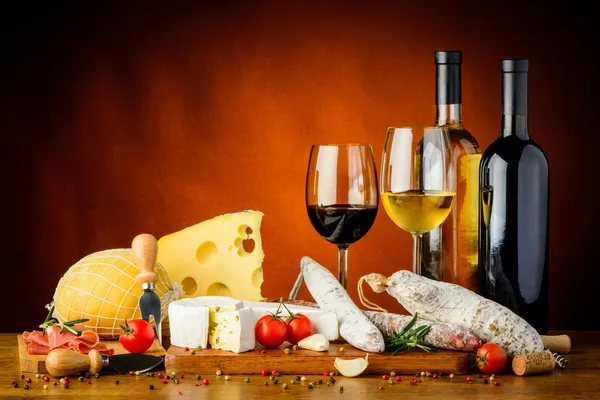
Entering the food and drink industry as a new business can be both exciting and challenging. With the right strategies in place, it’s possible to carve out a unique space in this competitive market.
From establishing a strong brand identity to navigating the complexities of packaging and distribution, each decision plays a crucial role in shaping the future of a business. Understanding these key considerations can help set the foundation for long-term success.
Brand Identity
Establishing a strong brand identity is crucial for new businesses in the food and drink sector, where trust and familiarity greatly influence consumer choices. People are often cautious about trying new food or drink products, preferring brands they recognise and trust for quality and safety. A well-crafted brand identity, therefore, does more than just attract attention—it reassures customers, making them more likely to choose your product over less familiar options.
For example, a branded food truck wrap not only advertises but also signals reliability and quality, key factors in food-related purchases. Consistency in branding across packaging, social media, and other touchpoints further reinforces trust, making your brand more memorable.
A strong brand identity also benefits your relationship with retailers, making your products more appealing for stocking. Shops are more likely to purchase from brands that are well-recognised and trusted, knowing these products are more likely to sell. In an industry where consumers value brands that align with their values and offer consistency, having a clear and trustworthy brand identity is essential.
Packaging & Sustainability
Packaging plays a crucial role in both product appeal and sustainability, especially in the food and drink industry. It’s often the first thing a customer notices, making it a vital part of brand perception and a key factor in purchasing decisions. Well-designed packaging can effectively convey a brand’s identity through thoughtful use of logos, colour schemes, and messaging, all while aligning with values like sustainability.
Eco-friendly packaging, such as recyclable cardboard, is increasingly popular, with options like single-walled or double-walled cardboard available to suit different product needs, ensuring both durability and protection. For food and drink businesses, focusing on sustainable packaging can significantly increase the likelihood of consumers choosing your product, as many shoppers now prioritise eco-conscious choices.
Shelf-ready packaging (SRP) is also essential, particularly for food and drink products in retail environments. SRP not only enhances product visibility on crowded shelves but also meets specific retailer guidelines, improving the chances of securing and maintaining retail listings.
Distribution & Shipping
Distribution and shipping are crucial for any new food and drink business that needs to deliver fresh products to customers. Ensuring that items arrive fresh and on time is essential, but this can be challenging for startups without established distribution networks. Factors such as perishable goods, varying delivery locations, and maintaining product quality during transit add layers of complexity that require meticulous planning.
To address these challenges, new businesses can implement strategies that prioritise efficiency and freshness. Companies like Hello Fresh have set a high standard by using temperature-controlled packaging and carefully timed deliveries to ensure products arrive in optimal condition. Smaller businesses can adopt similar practices, even on a smaller scale, to enhance customer satisfaction and strengthen their brand reputation.
Partnering with a third-party logistics provider (3PL) is another effective way to manage distribution and shipping. 3PLs offer many advantages such as expertise and resources that can streamline operations, reduce costs, and improve delivery times, especially for perishable goods. By outsourcing logistics to specialists, businesses can focus on their core operations while ensuring reliable and efficient product distribution.
Understanding Your Target Demographic
Understanding your target demographic is crucial for success in the competitive food and drink industry. Different customer segments have varying tastes, dietary needs, and purchasing habits, so knowing exactly who you’re targeting can shape every aspect of your product. For instance, a brand aimed at health-conscious consumers might focus on organic ingredients, clean labelling, and eco-friendly packaging, while a product targeting young professionals might prioritise convenience, bold flavours, and modern, eye-catching design.
Research methods such as taste tests, food trend analysis, and customer surveys are invaluable for gaining insights into your audience’s preferences. These insights should guide not only the flavours and ingredients you choose but also the packaging and marketing strategies you employ. For example, packaging for premium organic snacks might emphasise sustainability and minimalism, while energy drinks targeting younger consumers might use vibrant colours and dynamic graphics.
Financial Planning & Budgeting
Solid financial planning is essential in the early stages of any business, particularly in competitive industries. Effective budgeting helps to control costs and ensures that resources are allocated efficiently, maximising return on investment.
Start by forecasting your expenses and revenues, and regularly review your budget to adjust for unexpected costs or opportunities. To manage your finances effectively, prioritise spending on essentials like quality ingredients, packaging, and marketing while avoiding unnecessary expenditures.
For funding, consider a range of options, including personal savings, loans, grants, and investors. Crowdfunding and small business loans can also provide the necessary capital to launch and grow your business.
Marketing & Promotion
Marketing and promotion strategies are crucial for making your food and drink products stand out in a crowded market. To build awareness, start by showcasing your products through various channels, such as food-focused social media platforms, influencer partnerships, and participation in local food festivals. These avenues help you reach a wider audience and introduce your products in environments where consumers are already seeking new culinary experiences.
Engagement is key to turning awareness into loyalty. Create mouthwatering content, such as recipe ideas or behind-the-scenes glimpses of your production process, to connect with your audience. Social media platforms like Instagram and TikTok are particularly effective for engaging food enthusiasts. Additionally, offering promotions, such as discounts or limited-time offers, can entice new customers to try your products and keep existing customers coming back for more.
Copyright © 2024 California Business Journal. All Rights Reserved.
